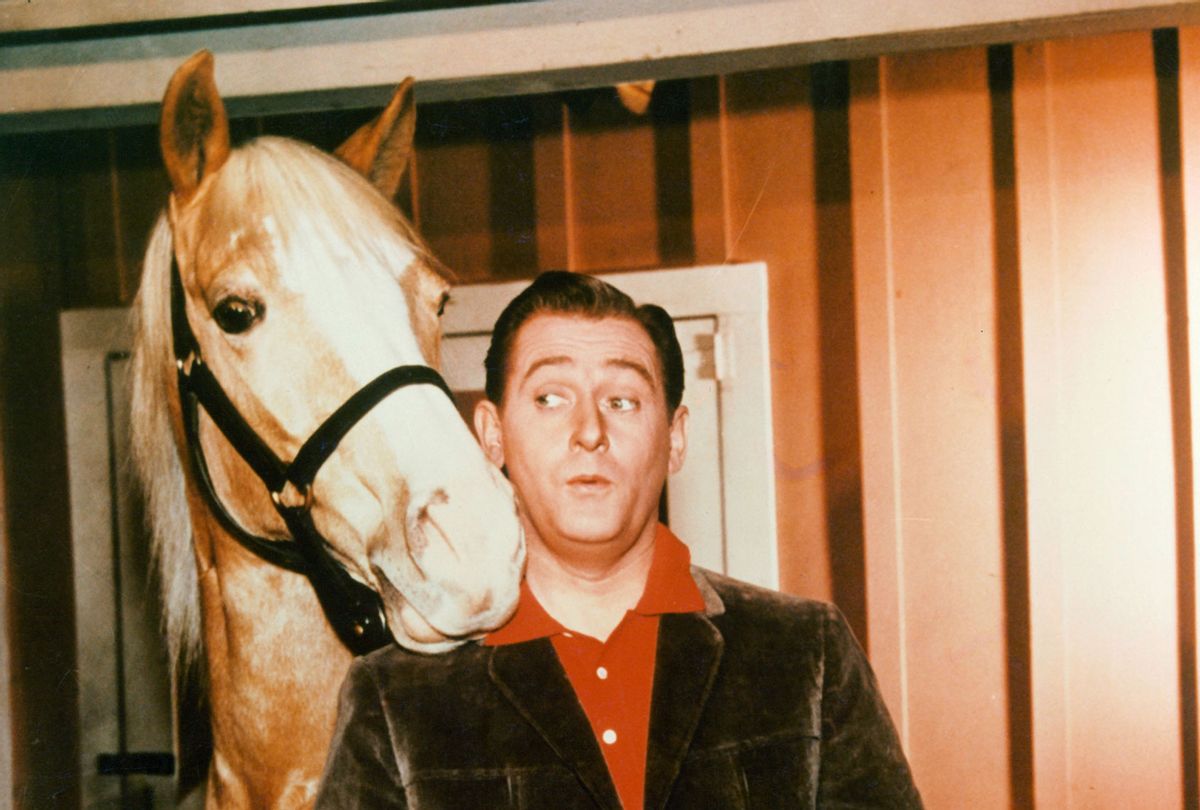It's no secret that the internet has been captivated by Bunny the Talking Dog.
In case you've been on a digital detox over the last couple of years, Bunny is TikTok's beloved "talking" Sheepadoodle who uses an augmentative and alternative communication (AAC) device to communicate with her human parent. As Salon has reported, Bunny has stunned her followers by seemingly asking existential questions, recalling her dreams, and wondering about Uni, the cat she lived with who went missing. Indeed, it's not just Bunny anymore. There's also Billi, a 13-year-old domestic cat in Florida, who's captured the internet's attention by pressing buttons to communicate.
Both animals are enrolled in a project called TheyCanTalk, which is seeking to better understand if animals can use AAC systems to communicate with humans. The project consists of dogs, cats, a small cohort of horses, and one peahen. In the study, participants receive instructions on how to set up their AAC buttons. They usually start with easy words like "outside" and "play" linked to their buttons. Pet parents set up cameras to constantly monitor the animals when they're in front of their boards, data which is sent to the lab where researchers examine what they say.
Want more health and science stories in your inbox? Subscribe to Salon's weekly newsletter The Vulgar Scientist.
As popularity continues to rise by way of social media and these talking animals, some might be wondering: can any animal species learn how to talk using an AAC device?
"Certainly when we got started on this, my expectation was that we would see that dogs would do surprisingly well, but I didn't expect we would see that much in the way of a great performance from non-dogs," said Leo Trottier, cognitive scientist and founder of How.TheyCanTalk Research and developer of the FluentPet's system that Bunny and Billi use. "Dogs have famously evolved with us for thousands of years. We've engaged in aggressive selective breeding with them. Their behaviors are obvious; they are very interested in us, they look into our eyes routinely when we're talking to them, they can famously recognize pointing gestures that's been shown last, so I was surprised to see how cats ended up performing.
Indeed, as Salon has previously reported, Billi speaks up to 50 words. And while there are some anecdotal differences between how cats and dogs use the buttons, the fact that a non-dog species is succeeding with them gives Trottier confidence that perhaps any animal can use them.
"We have birds which are using them. The evidence for the birds is pretty limited, but I'm not gonna write them off, but I think the evidence for cats using the buttons inherently or in a way that's contextually appropriate is stronger than for birds," Trottier said. "But it does seem like it's surprisingly the case that many non-dog species seem to be able to do this better than expected."
While Trottier admits he's not very "optimistic about reptiles," the surprising fact that a non-dog species appears to be doing better with the buttons than expected raises new questions around animals, language and communication. The reason why animals don't speak like humans is in part an issue of vocal anatomy: they might lack the tongue flexibility to speak, vocal cords or mouth musculature. According to a 2018 study published Frontiers in Neuroscience brain power puts humans at an advantage to being able to speak, too. But that doesn't mean animals don't communicate in their own ways, or have the ability to mimic human speech. A study published in 2018 found that orca whales can mimic the words such as"hello" and "bye." A 2016 showed an orangutan was able to copy the pitch and tone of sounds made by researchers.
AAC devices were created to help people who faced difficulties in expressing natural speech. If animals face difficulties, could it be possible that animals could use an AAC to express themselves, too? Indeed, this is precisely what inspired Christina Hunger, a speech-language pathologist, who famously taught her dog Stella how to use an AAC device. There have been some clues that non-canines and felines would succeed at using an AAC — like a bottleneck nose dolphin pressing a paddle to singal "yes."
Trottier said seeing cats succeed using an AAC device has "refined" the questions: "What has the impact been of co-evolution? And what are the things that get in the way of language use by non-human animals?"
The buttons, Trottier said, being similar to each other yet slightly different could be a means of being something that is "language friendly."
"Because that's kind of the way words are, words are these things that we share with each other that are both very similar, they're all just sounds, made by our lips, at each other, but they're also slightly different, right?" Trottier said. "And so it might be the case that the major impediment to language use in non-human animals is – well, obviously, there's going to be general intelligence – but it could be the case that the language ability is somewhat independent, and depends on some kind of unique set of kind of cognitive capabilities that maybe buttons enable."
Read more about how pets communicate:



Shares